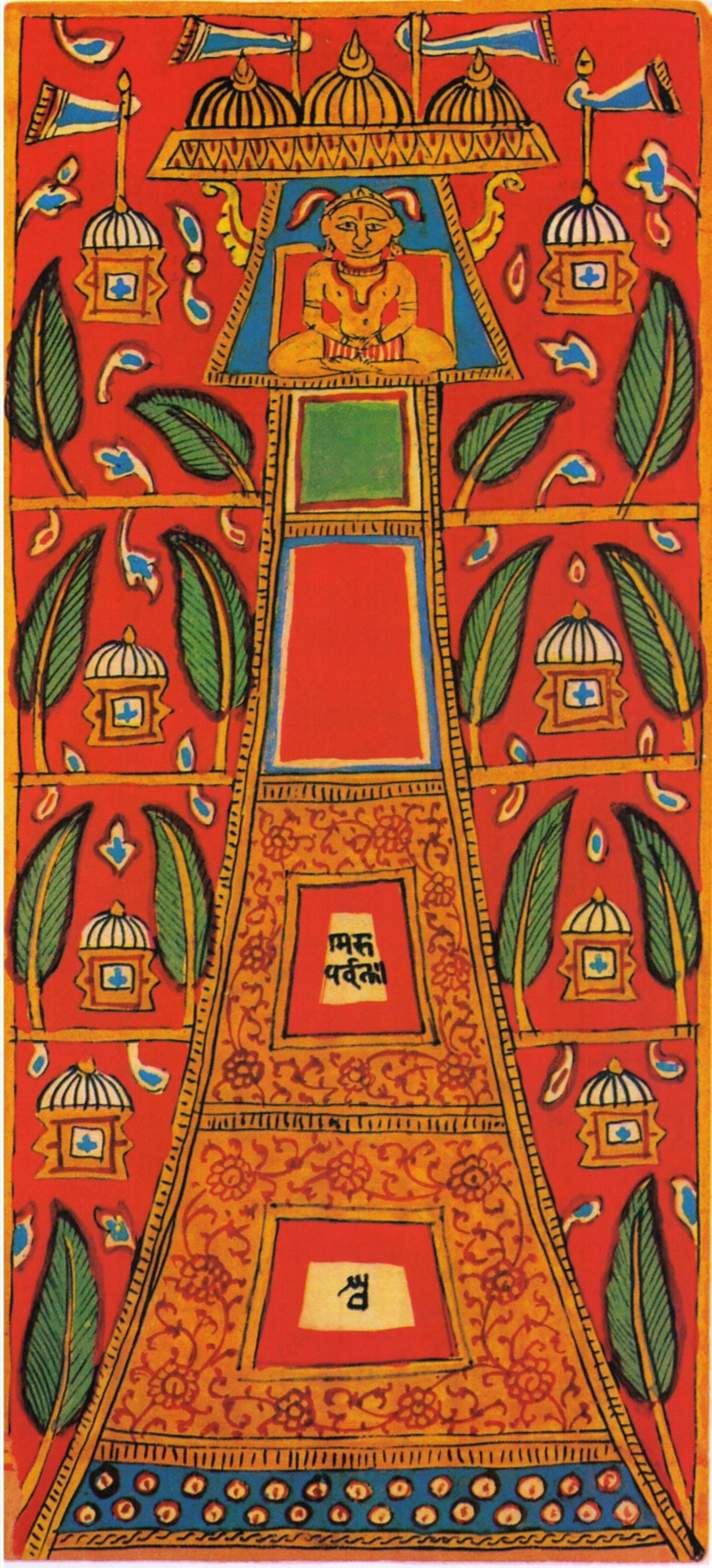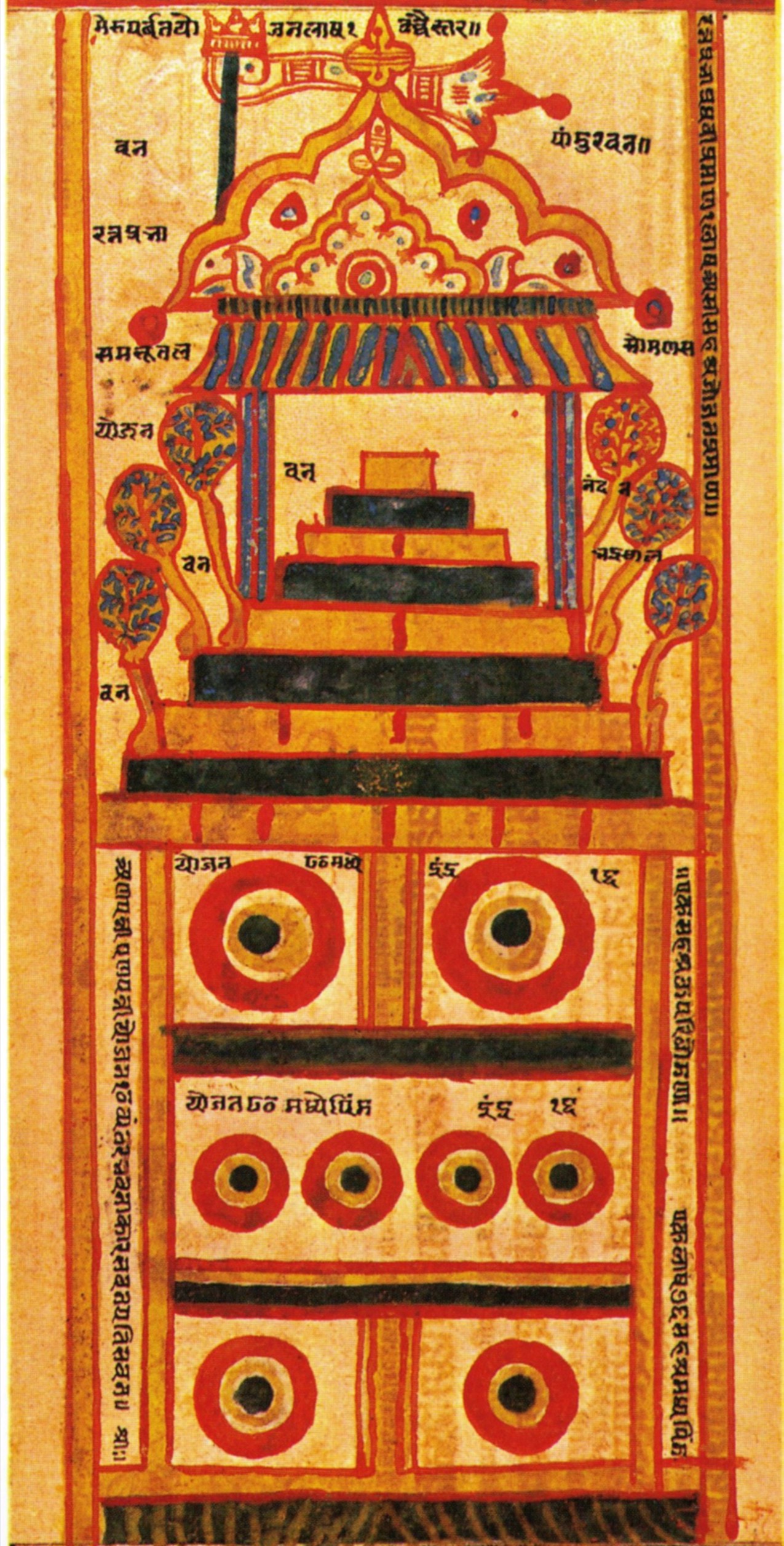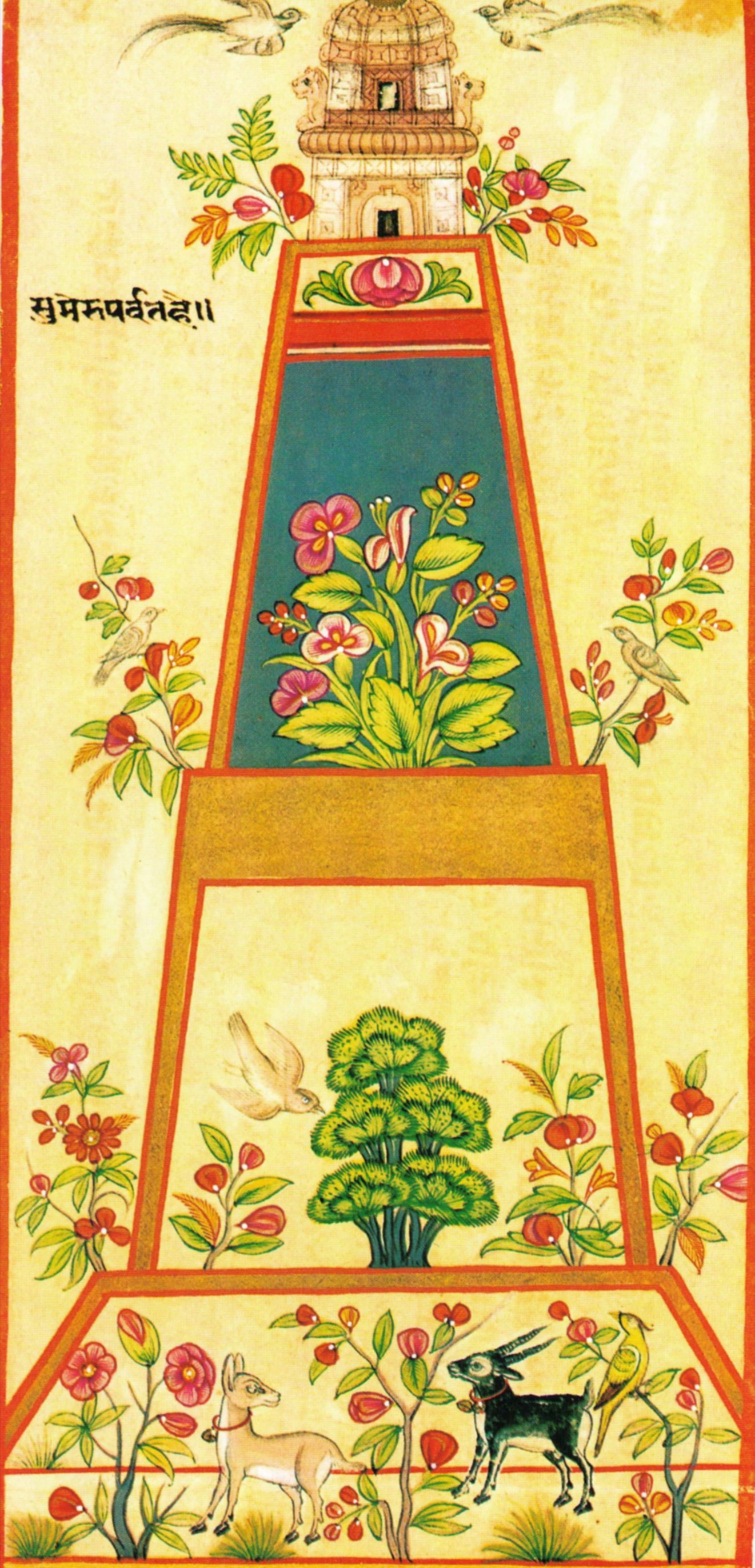Meru Mountain
The whole wide universe is seen by the knowledge of omni-knowledge. There is a Tircha Lok within it. The road leading to it is both long and wide. The height is 1800 yojans, of which 900 yojans are on flat land, while the other 900 yojans are on height. In this 900 yojans the last 110 Yojans contain a jyotis circle, where the Jyotishi gods abode. The aircrafts of these gods move around the Meru Mountain.
Meru Mountain is located exactly in the center of Jambudwip between East and West Mahavideh. In the north is Devkuru situated and Uttarkuru in south. Meru Mountain is like a pillar, which is wider at base and gets narrower and narrower as it grows up. The height of Meru Mountain is one lakh yojans, of which 1000 yojans are below earth and 99,000 yojans are above. The wide is 10090 yojans in the root within the earth whereas it is 10,000 yojans wide on the earth level. Gradually the width becomes less and less as it grows up, and on the top peak it is 100 yojans wide. Thus the Meru Mountain is very wide in its root, gets less wider in the middle and becomes least wide at the top. The shape is similar to the tail of a cow. The whole mountain is very clean, full of diamonds, lakes and forests. Above the peak is a chulika.

Mount Meru (17th century, Rajasthan)
Meru Mountain is divided into three divisions (Chulika apart). These are called Kands:
- First Kand is called Adhyostankand.
- Second Kand is called Madhya (Middle) Kand.
- Third Kand is called Uparitan Kand.
The lowest Kand has a height of 1000 yojans, that of Middle Kand is 63,000 yojans and that of top Kand is 36,000 yojans.
There are four forests on Mountain Meru:
- Bhadrasha Van: It is located at the foot hill of the mountain on flat land. It is surrounding the Mountain Meru on all four sides. Its North and south width is 250 yojans and its east-west width is 22,000 yojans. The whole forest is divided into eight sections with four tree-shape mountains, viz. Saumanas, Vidyut, Prabh, Gandhmadan and Malyavan and two rivers, viz. Sita and Sitoda.
- Nandan Van: It is 500 yojans higher than the Bhadrashal Van and 62,500 yojans below the Somansvan. Its area is 500 yojans. In exact the middle of this section is Abhyantar Meru and in a distant of 50 Yojans are eight Kut of Dishakumaris. There are eight Palaces of eight Dishakumaris of Urdhva Loks; there is a Kut 500 yojans above it where a palace of the goddess is situated. Thus, the goddess stays 1000 yojans above the flat earth. 900 yojans of this section belong to Tirchha Lok while the 100 yojans above belong to Urdhva Lok (upper Lok); so the Goddess belongs to this upper Lok. Besides, in Nandanvan, there are four temples (Chaitra) on four sides of it. In other directions are two palaces of Ishanendra.
- Somvan: Somvan is situated 62,500 yojans above of Nandanvan. This is another series of Meru Mountain which is 500 yojans wide.
- Pandagvan: Pandagvan is 3600 yojans above Somvan. It is circularly 494 yojans wide.

Mount meru with the forests at the foot and on the terraces (17th century, Gujarat)
There are rocks for celebration of Birth celebration of Lord Tirthankaras:
Pandagvan
east
red
Raktakambla
west
white
Ati Pandukambla
south
red
Ati Raktakamblain
north
white
All these four rocks are used for celebrating the birth celebration of the Tirthankaras. The south direction Rock is used for the birth celebration of Tirthankaras born in Bharat Kshetra. The north direction Rock is used for birth celebration of Tirthankaras born in Airvat Kshetra. The east direction Rock is used for birth celebration of Tirthankaras born in eight Vijayas of northern bank of Sita Maha River of east Mahavideh Kshetra. On the west Rock there are two royal chairs. On the royal chair situated in north direction, the birth celebration is done for the Tirthankaras born in 8 Vijayas on north bank of the river Sitoda of west Mahavideh and on the royal chair in south direction, the birth celebration is done for the Tirthankaras born in eight Vijayas of south bank of river Sitoda.
In Jambudwip, over a period of time, not more than 2 or 4 Tirthankaras are born. In Bharat and Airvat Kshetra, when one Tirthankara is born, the birth celebration is done for two Tirthankaras at a time, and when four Tirthankaras are born in Mahavideh Kshetra, the birth celebration of four Tirthankaras is celebrated. When the Tirthankara is born in Mahavideh there is no birth of a Tirthankara in Bharat, Airvat and vice-versa. The reason is that the Jineshwar is always born at mid-night, and there cannot be mid-night in both Bharat-Airvat and Mahavideh simultaneously.

Mount Meru with forests (flowers) at the terraces (17th century, Rajasthan)